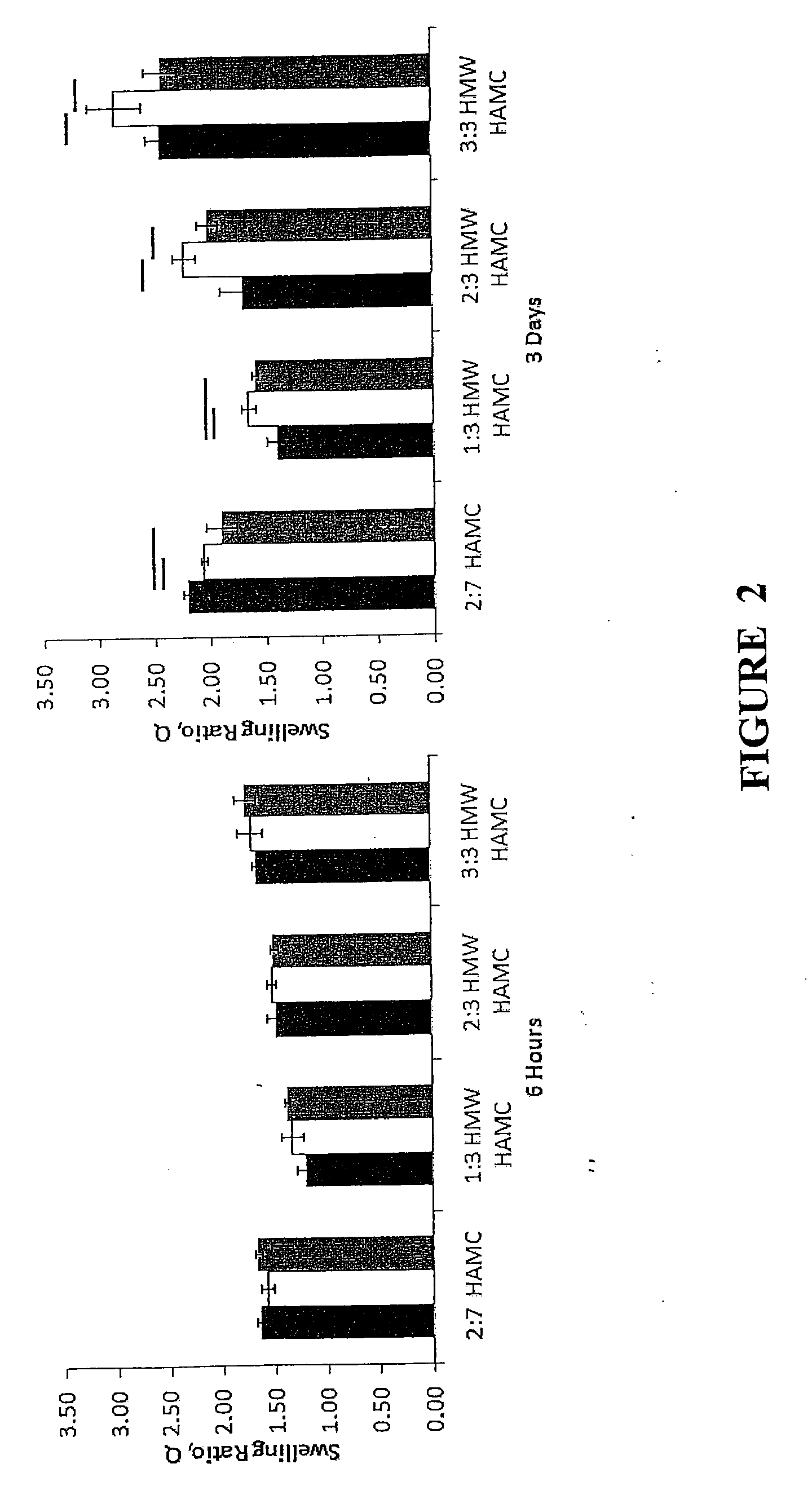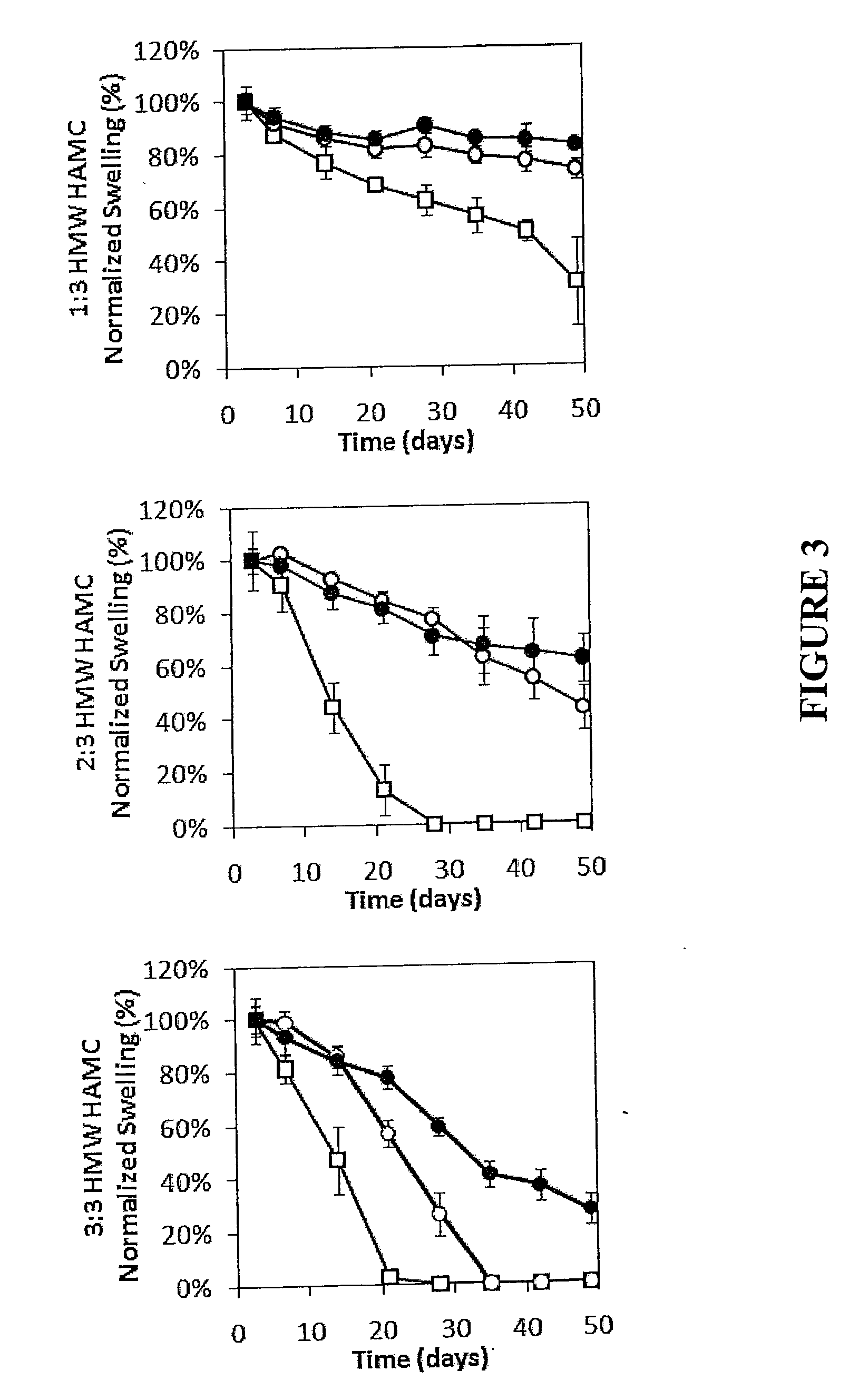Enhanced stability of inverse thermal gelling composite hydrogels
- Summary
- Abstract
- Description
- Claims
- Application Information
AI Technical Summary
Benefits of technology
Problems solved by technology
Method used
Image
Examples
examples
[0074]The present release formulation provides longer term release suitable for combination neuroregenerative and neuroprotective strategies. High molecular weight blends of hyaluronic acid (HA) or a derivative thereof and methylcellulose (MC) (HMW HAMC) which remain injectable and are stable for more than 28 days in vitro are described. To achieve longer-term release profiles, formulations of drug loaded poly(lactic-co-glycolic acid) (PLGA) nano- and micro particles were dispersed in the HMW HAMC gel. Use of the drug delivery platform was demonstrated using six therapeutic molecules or models thereof, shown in Table 1, for periods of between 1 and 28 days. This contribution demonstrates the composite HMW HAMC hydrogel is a flexible, localized drug delivery platform for the evaluation of therapies targeting protection and repair of the injured spinal cord.
TABLE 1Molecules released from HMW HAMCMolecularDesiredWeightNeuro-Neuro-TreatmentMolecule (model)(kg / mol)protectiveregenerativeT...
PUM
| Property | Measurement | Unit |
|---|---|---|
| Fraction | aaaaa | aaaaa |
| Fraction | aaaaa | aaaaa |
| Percent by mass | aaaaa | aaaaa |
Abstract
Description
Claims
Application Information
 Login to View More
Login to View More - R&D
- Intellectual Property
- Life Sciences
- Materials
- Tech Scout
- Unparalleled Data Quality
- Higher Quality Content
- 60% Fewer Hallucinations
Browse by: Latest US Patents, China's latest patents, Technical Efficacy Thesaurus, Application Domain, Technology Topic, Popular Technical Reports.
© 2025 PatSnap. All rights reserved.Legal|Privacy policy|Modern Slavery Act Transparency Statement|Sitemap|About US| Contact US: help@patsnap.com



